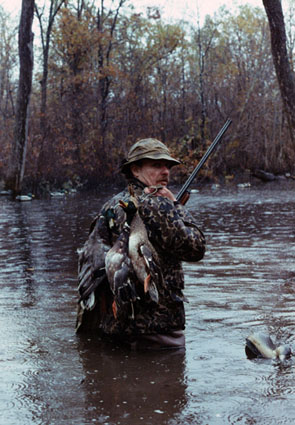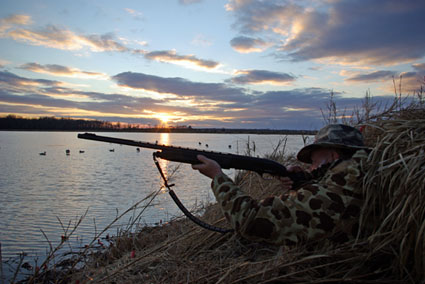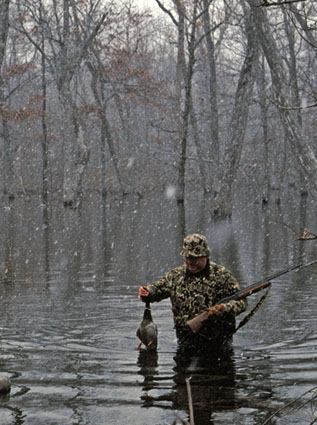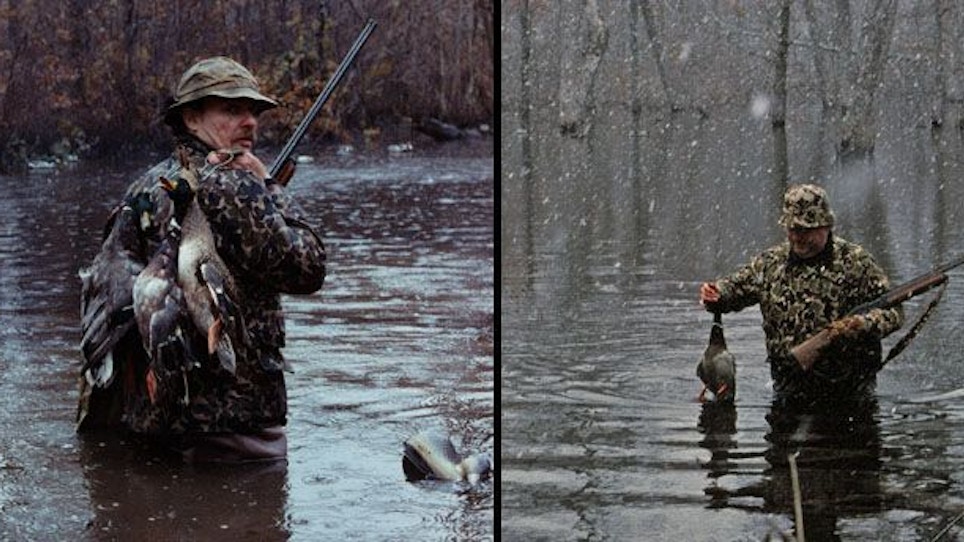 Low pressure in the forecast indicates rain is on the way—bad news for most, but not for avid waterfowlers. |
Weather conditions greatly influence duck-hunting success. Foul weather, for example, often is considered a blessing for duck hunters. Yet hunters must know how these conditions influence ducks to be successful.
Sunny days, on the other hand, often are deemed a duck hunter’s bane. Yet waterfowlers who know how fair-weather conditions affect duck behavior often bag limits.
Sunny, cloudy, windy, calm, freezing, warm — let’s look at conditions hunters often encounter and some tips for success no matter what the forecast.
Storms
A low-pressure system in the forecast indicates impending rain — bad news for most, but not the duck hunter. Storm fronts increase wind and cloud cover. Ducks stop feeding at night and move more near dawn and dusk. There’s no glare off gun barrels and upturned faces, and no distinguishing shadows to reveal waiting waterfowlers. Hunting improves.
As winds intensify, ducks move to protected areas — backwaters, coves, green-timber openings, lee side of islands. Rain and/or sleet intensifies their scramble for shelter, limiting and defining places they’re likely to be. Birds concentrate in smaller areas. The savvy hunter is a step ahead, setting out decoys and preparing to shortstop their weather-driven migration.
Changing winds also work in the hunter’s favor. Areas providing sanctuary at a storm’s onset lose their protection as the storm progresses and winds change. Ducks settle into one lee, then are forced to find another. They fly throughout the day and lose much of their cussed wariness. Most fly low in calmer air near ground. In the right place at such a time, a hunter with a few decoys is sure to find a bit of duck-hunting heaven.
As weather changes, savvy duck hunters remain mobile, adapting to changing winds and lees. A well-camouflaged duck boat is a special asset now, providing easy access to shorelines, transportation for the hunter and his equipment, and a ready-made blind. If water isn’t too deep, chest waders serve the same purpose. Moving from place to place, the hunter can squat in a marsh or stand by a cypress without getting wet. A waterproof parka and gloves complete the weather-proofing, keeping the hunter warm and dry.
Fair Skies
Clear, warm, windless days can make duck hunting tough. Ducks can now fly, raft, dabble or dive anywhere they please. Direct sunlight makes hunters’ upturned faces glow with electric intensity. Even a well-camouflaged hunter often is revealed by shadows. Slight movements are visible. If the weather pattern holds several days, birds quickly learn where hunters hide, when they shoot and where safe zones are.
 Fair weather duck hunts can be tough, but go anyway. Watching and waiting may bring success. |
In this situation, ducks might come and go as they please, but they never do so at random. The flight lanes they establish, the fields and woods they feed in, the places they raft are purposely chosen, usually because they offer respite from hunter disturbance.
By patterning duck movements, you can overcome disadvantages of blue-sky hunting. The best way to do this is simply go hunting. Set out a few decoys in a place you’ve chosen to the best of your ability, then watch the comings and goings of birds throughout the day. Resolve to stay put, even if shooting isn’t good. Note the time ducks start flying and routes they follow; places where they fly high and fly low; the time they return; and places they raft up. When you’ve determined their flight, feeding and resting patterns, you can position yourself to intercept them on future hunts.
Freezing Weather
Extreme cold is a blessing and bane. When shallows ice over, ducks concentrate in remaining areas of open water. Caloric intake increases to compensate for lower temperatures, so twice-daily feeding becomes the norm. At temperatures below 20 degrees, you’ll start noticing afternoon feeding flights in addition to predawn movements. Unfortunately, freezing weather also makes boat travel more difficult and tests one’s ability to withstand winter’s cold. Hunters must cope with frigid temperatures.
Part of that coping is knowing where water will be open in freezing temperatures. This might be the main body of a creek or river where currents prevent ice-up; in a sheltered backwater protected by levees or high banks; or in shallow green-timber flats with current from adjacent streams.
 When snow falls, hunters may have to use loud calling to have the best chance for killing ducks. |
Many avid hunters work unfrozen river channels during frigid weather. They boat the river until they scare up a duck flock, then set up where the ducks flushed. Often, decoys are set in strings alongside willows, high banks or other sheltered spots. The boat is hidden in cover with camouflage netting over it. Hunters stand in waders next to trees. The ducks they flushed will soon return, and when they do, the fun begins.
Snowstorms & Fog
When visibility is limited by fog or heavy snow, it pays to call often and long whether you see ducks or not. Poor visibility keeps most ducks grounded, but those caught en route listen for friendly calls and will automatically set their flaps when they hear them. Few duck-hunting moments are as exciting as hearing unseen mallards answering a call in fog or a snowstorm.
Snow Cover
Cold alone won’t drive ducks from an area where food is plentiful, but if snow gets several inches deep or becomes glazed with ice, ducks must move elsewhere to find their groceries. Again, it pays to know where ducks go when conditions get bad. If woods remain open and acorns are plentiful, birds accustomed to feeding in fields might gather in flooded timber when snow piles up. Corn fields are so attractive, they might continue drawing dense concentrations of birds even when blanketed with snow. On big waters, hunting divers like scaup and buffleheads often remains productive even though mallards and other dabblers have been forced to move out.
The smart waterfowler matches hunting tactics to weather throughout the season. By applying scouting techniques and a little reasoning about duck behavior, he develops an instinct for determining where and how to hunt no matter what’s going on outside. Blue skies or gray, the odds are in his favor.






